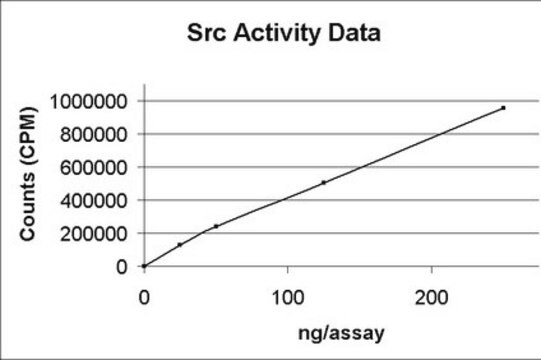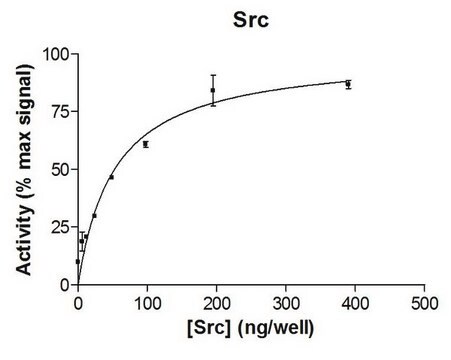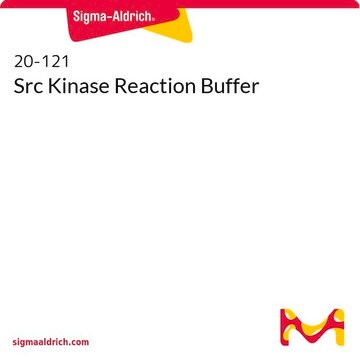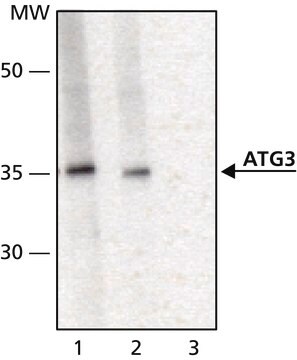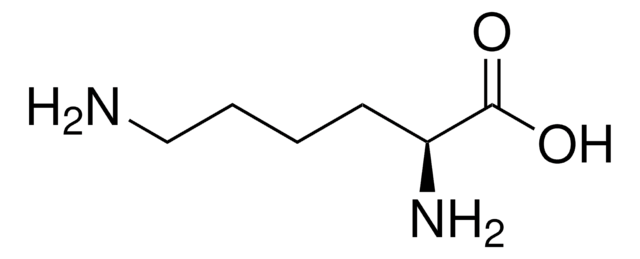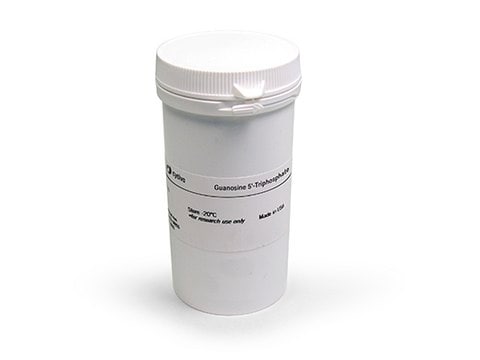S1076
SRC, active, GST tagged human
PRECISIO® Kinase, recombinant, expressed in E. coli, ≥70% (SDS-PAGE), buffered aqueous glycerol solution
Synonym(s):
ASV, c-SRC, p60-Src
Sign Into View Organizational & Contract Pricing
All Photos(1)
About This Item
UNSPSC Code:
12352200
NACRES:
NA.32
Recommended Products
General description
SRC proto-oncogene, non-receptor tyrosine kinase (SRC) belongs to the family of non-receptor tyrosine kinases. SRC was originally identified as a transforming protein of the Rous sarcoma virus (RSV) that had enzymatic ability to phosphorylate tyrosine in protein substrates. It contains an amino-terminal domain, conserved Src-homology domains (SH2 and SH3), a tyrosine kinase domain and the carboxyl-terminus. The gene encoding this protein is localized on human chromosome 20q11.23.
Application
SRC, active, GST tagged human has been used in the in vitro kinase assay.
Biochem/physiol Actions
SRC proto-oncogene, non-receptor tyrosine kinase (SRC) phosphorylates membrane proteins and nucleoproteins and activates various intracellular signaling cascades. It is overexpressed and activated in a large number of human malignancies and has been linked to the development of cancer and progression to distant metastases. In addition to increasing cell proliferation, a key role of SRC in cancer seems to be the ability to promote invasion and motility, functions that might contribute to tumor progression.
Physical form
Supplied in 50 mM Tris-HCl, pH 7.5, with 150 mM NaCl, 0.25 mM DTT, 0.1 mM EGTA, 0.1 mM EDTA, 0.1 mM PMSF, and 25% glycerol.
Legal Information
PRECISIO is a registered trademark of Merck KGaA, Darmstadt, Germany
Storage Class Code
10 - Combustible liquids
WGK
WGK 1
Flash Point(F)
Not applicable
Flash Point(C)
Not applicable
Choose from one of the most recent versions:
Already Own This Product?
Find documentation for the products that you have recently purchased in the Document Library.
Min Yu et al.
Microbiology and immunology, 65(1), 40-47 (2020-10-08)
The ischemia-reperfusion-induced damage in human brain microvascular endothelial cells (BMECs) is associated with disruption of the blood-brain barrier. CXC chemokine ligand 5 (CXCL5) is reported to be up-regulated in ischemic stroke. However, the detailed function of CXCL5 in this pathological
ZDHHC3 Tyrosine Phosphorylation Regulates Neural Cell Adhesion Molecule Palmitoylation.
Lievens PM
Molecular and Cellular Biology, 36(17), 2208-2225 (2016)
C Jacobs et al.
Cancer research, 43(4), 1696-1702 (1983-04-01)
An endogenous protein of human cells pp60c-src, which is closely related to the product of the transforming gene of Rous sarcoma virus, pp60v-src, has been quantitated by measuring its enzymatic activity in an immunoglobulin G protein kinase assay. The influence
The Tyrosine Kinase c-Src Specifically Binds to the Active Integrin aIIb?3 to Initiate Outside-in Signaling in Platelets.
Wu Y
The Journal of Biological Chemistry, 290(25), 290(25)-290(25) (2015)
SH3 domain of c-Src governs its dynamics at focal adhesions and the cell membrane.
Machiyama H
FEBS Journal, 282(20), 4034-4055 (2015)
Our team of scientists has experience in all areas of research including Life Science, Material Science, Chemical Synthesis, Chromatography, Analytical and many others.
Contact Technical Service